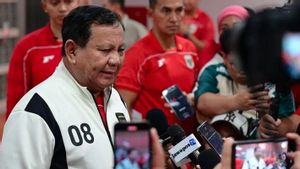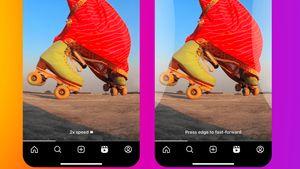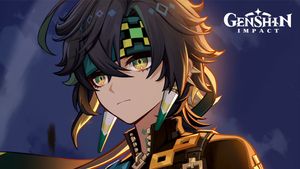JAKARTA - Indonesian women's beauty standards are never singular. About the standard of beauty since time immemorial has been influenced by many things. The influence of Dutch colonialism, for example. The presence of the Dutch in the archipelago confirmed the notion of "white" skin as the new standard of beauty.
Who is white, he is a beautiful and superior group. While other skin colors are the opposite. White skin also influenced the class that made the Caucasian race the number one citizen in the Dutch East Indies.
At the beginning of the reign of the Dutch VOC trading partnership in the archipelago, the presence of Europeans who settled was still small. Transportation problems and long distances are the main problems.
This condition makes Europeans who come to the Equator Earth limited to European men only. The arrival was not accompanied by women. Except for women who had become partners of high-ranking VOC officials.
This condition made the Governor General of the VOC who had served twice (1619-1623 and 1627-1629) Jan Pieterszoon Coen concerned. According to him, the Dutch would not succeed in making the archipelago a colony without the presence of educated European women.

Coen also wrote to the leadership of the VOC, Heeren Zeventien in the Netherlands. Without further ado, Coen asked to immediately send women from the Netherlands. Anyone, including orphaned women and those from poor families.
“Coen not only asked for girls to be sent, but also suggested that many good Dutch families would migrate to Batavia. Together with the families, he hopes to include around 400 to 500 boys and girls taken from orphanages in the Netherlands," said Acmad Sunjayadi in the book [Not Tabu in the Archipelago (2018).
“The ratio of the number of boys and girls proposed is 2:1. For girls, they will live with their families or in special schools funded by the company. There they will be nurtured, cared for, educated, and taught until they reach puberty, old enough to be married to a good future husband. From this marriage, it is hoped that the descendants of respectable families will be born,” he added.
Coen's proposal was able to add Europeans to Batavia. But not big. Therefore the Coen project is considered a failure. Heeren Zeventien cited the long distance between Holland and Batavia as the cause of the failure.
Moreover, the pure virgins as unblemished as Coen had hoped were never sent. Marriages between fellow Europeans in Batavia did not produce offspring. This fact can be seen from the high rate of miscarriage and high child mortality.
“In 1679, when the population of Batavia reached four times the population in 1632 (at that time, 8 thousand people), it had already reached 32 thousand people. Europeans are a minority group and half of them live in the eastern part of the city, around the Tiger Trench, Crocodile Trench and Parit Nobles (heerengracht) with Chinese citizens. The number of white residents did increase to 2,227 people, but this was only 7 percent of the total population of the city,” wrote Dutch historian Hendrik E. Niemeijer in the book Batavia of the Colonial Society of the XVII Century (2012).
White privilege
The high number of European migration to the Archipelago was only achieved when the Suez Canal was opened in 1869. The presence of the Suez Canal was able to shorten the Dutch-Batavian travel time. The Suez Canal marked the culmination of the presence of European women to the Dutch East Indies.
The arrival of European women not only brought with them European culture. Their arrival also brings back a new beauty standard that is synonymous with the skin color of the Caucasian race.
Throughout this period the color white also marked a high social status. The views of the Dutch colonial government were even different from those of other European countries, such as England.
If in England only women of "pure" European blood were granted the privilege, in the Dutch East Indies, those with mixed ancestry and various other professions were included in the group that received various privileges from white skin.
This reality makes the natives aspire to have white skin, at least for their descendants. “The so-called elite women of the colonial period are of course not only the wives of the governor general.
"It includes the wives, widows and daughters of senior traders, warehouse administrators, heads or heads of trade offices, fiscal offices, court officials, and members of the Indies council," says Jean Gelman Taylor in the book Social Life. in Batavia (2009).
Anyone who has white skin automatically gets various privileges, even if they are of mixed descent. These privileges include the right to education, work, dance parties, to positions in the eyes of the law.
It was this white woman's representation that further strengthened the white nation as the number one citizen in the Dutch East Indies. So did the Japanese living in the Dutch East Indies, who were categorized as "honorary Europeans."
Expanding through advertising
Caucasian white beauty standards were increasingly widespread through advertisements for beauty products in various newspapers in the 1900s. Those who appear mostly in newspaper advertisements are limited to European women.
Beauty products that always use European women, even if juxtaposed with the Malay language. A series of advertisements in the newspaper became abundant evidence of the representation of Caucasian women as the ideal of beauty in the dominant beauty discourse.
The ad mix is dominated by beautiful Caucasian women's faces in black and white images, plus a narrative that forms ideal love. Instantly, many native women were tempted to get white skin like an advertising model.
In an advertisement in the newspaper De Huisvrouw in Indie (1937), for example. The caption that accompanies the picture of a Caucasian woman mentions: How the most beautiful women in the world maintain their beauty with Palmolive soap.
“It was only during the Dutch colonial era that white, as a skin color, began to refer to white people, meaning the Caucasian race – the meaning of white color was thus fused with the meaning of white race. As can be seen in the advertisements circulating at the time, products with a Caucasian style, ranging from 'medicated' powders such as Virgin and Ninon powder, to Snow cold cream, usually claimed to make people's skin white (which literally means the color white, not always white race)," concluded L. Ayu Saraswati in the book White: Skin Color, Race, and Beauty in Transnational Indonesia (2013).
*Read other information about NUSANTARA HISTORY or read other interesting articles from Detha Arya Tifada.
Other MEMORIESThe English, Chinese, Japanese, Arabic, and French versions are automatically generated by the AI. So there may still be inaccuracies in translating, please always see Indonesian as our main language. (system supported by DigitalSiber.id)










